Our speakers are ardent and knowledgeable people who know hydrology and are passionate about the rugged terrain and wild waters of the Driftless area. The video starts with the basics - how groundwater works, interconnections to surface water, land use impacts and drinking water impairment. Jeff Broberg led us through this with humor and grace. Jeff's home in rural Winona doesn't have a safe water supply, so he has a personal stake in the water quality of the area. Next our speakers addressed two examples of watersheds - one in Minnesota and one in Iowa. The WinLac watershed in Minnesota surrounds the cities of Winona and La Crescent, along the Mississippi. The uplands of this watershed are in the Karst bluffs and land use has heavily impacted drinking water quality. Paul Wotzka described the impacts we see in this small watershed, including the impacts of row crop and animal agriculture. When land use changes, water quality improves. How does that work? Paul explained how his land practices have improved the water at his home. The second watershed we looked at is Bloody Run in northeastern Iowa - read more about Bloody Run at this link. Larry Stone is part of the Save Bloody Run movement, and he provided an update on where this case is in the courts and on the ground. The webinar wrapped up with a lively question and answer session led by LWV UMRR Chair Mary Ellen Miller. Many thanks to our speakers for this excellent program!
0 Comments
The LWV UMRR blog is going to focus on groundwater for the next few months. This month we have two posts on the transfer of groundwater from state to state and country to country through bottled beverages and agricultural products. In "Exporting Water from the Mississippi - one 0.5liter Bottle at a Time", we take a look at the efforts of Niagara Bottling to site water bottling facilities in Minnesota and Wisconsin. This California company is seeking to expand in areas where cities will use their water supplies to encourage economic growth - the catch is that municipal water supplies are rated a higher priority than industrial uses, so an industrial use of municipal water takes advantage of a loophole in the system. The second post, "Groundwater is moving across the world in products" looks at the use of Arizona groundwater to raise alfalfa for dairy herds in Saudi Arabia. Arizona passed an act requiring the big cities to manage groundwater sustainably, but that law does not apply outside these major population centers... another loophole being exploited to access water. Minnesota also passed a Ground Water Protection Act, back in 1989. The Minnesota Ground Water Association charged a team with developing a white paper that looks at implementation of the Act in the past 30 years, and then looks ahead to what more needs to be done. (You can view a video on this Act and White Paper at this link.) One issue that stands out through all of these is the movement of water from one state, or one country, to another. Without clear policies to govern sharing (and not sharing) of water, there will be piecemeal protections and continuing over-withdrawals.
There's a whole more ways that water moves in products. Bottled beverages, dairy products, agricultural products and much more. In November, CNN posted an article on how groundwater in Arizona (yes, super-dry Arizona) is being used to grow alfalfa that is shipped to Saudi Arabia (where the use of groundwater for agricultural products has been prohibited) to feed cattle for Saudi dairy products.
Dropping groundwater levels are not just a problem of water supply for residents; cities are impacted, too, threatening the water supply of thousands. And when aquifers drop, the ground surface compacts, resulting in land subsidence. And changes in land use have resulted in other problems; the CNN article documents floods of silt that have impacted local homes due to changes in runoff patterns.
Arizona passed a law back in 1980, the Arizona Groundwater Protection Act, that established "Active Management Areas" around Phoenix, Tucson and other high-growth areas, but does not address agricultural use of groundwater. (This article on the Arizona Municipal Water Users Association blog describe the Act and provides background on why it was passed.) Foreign interests are exploiting the lack of protection for the resource and are 'mining' the resource to move groundwater, as products, from this very thirsty region.
We should take time to think about this... it's easier to feel outrage about Arizona water feeding Saudi cows than it is about Midwestern schoolkids eating Arizona citrus. But we are all part of the problem... and we all need to be part of developing and implementing smart laws and effective protection measures to protect our water resources.
There's a lot of water in Minnesota. With extensive resources of both groundwater and surface water, this is becoming a draw for water-intensive industries. The current proposal that's in the news is a water bottling plant that is proposing to use municipal water from the City of Elko New Market (locals call it ENM). The company proposing the plant is California-based Niagara Bottling.
This plant would be located in a newly-approved industrial park being built along Interstate 35 in Scott County, on the south edge of the Twin Cities Metro area. The City of ENM draws it's water from wells finished in the Jordan Aquifer, a major water supply aquifer for many other cities in the area. Springs from this aquifer form the headwaters of the near-by Vermillion River, a tributary to the Mississippi. Residents have raised concerns about the project, citing noise, traffic and well interference. They are fighting the project through social media, demonstrations and advocacy in various ways. This blog post will focus on the issues of water use increase and water export, not the other local issues of concern. The City of ENM held a public meeting on the project - there were so many testifiers at the meeting that it was held over from December 15 to December 20. This story on KARE11 provides a good update on this process. Here's the link to view the recorded City Council meetings that include these hearings. Water appropriations in Minnesota are regulated by the Minnesota Department of Natural Resources,this page on the DNR website provides statutory reference and information on how it works. In this case, expansion of the amount allowed to be withdrawn from the Jordan by the City of ENM requires modification of the city's appropriation permit. DNR staff has confirmed that DNR has received a permit amendment request from the City, and advised the City that they must first update their Water Supply Plan if they want to increase water usage related to a bottling plant. This plan will identify what measures will be implemented in case of a water crisis in order to maintain aquifer levels, and reduce potential well interference and water use conflicts. Once the Water Supply Plan is updated, DNR and the Metropolitan Council (a coordinative body of government responsible for planning in the Twin Cities) will evaluate the plan for sustainability and environmental impacts. If the proposed project does not meet state sustainability standards, DNR will not authorize the increase in water appropriation. Conversely, if the proposal meets the standards, the expansion of the city's appropriation permit will be allowed. The author of this post has requested more information on what standards DNR will specifically apply, but no answer was received as of noon on December 19. The concerned citizens in ENM also have filed a request for specific environmental review of the project. They filed a petition with the Minnesota Environmental Quality Board with 400 signatures requesting that an Environmental Review Worksheet for the project. The EQB approved the petition and assigned the EAW preparation to DNR; this will move forward in a separate process. This type of project has been seen elsewhere, where water-intensive industries plan to use municipal water supplies to supply water for their projects. Niagara will be opening a new plant in Baltimore County, Maryland in the spring of 2023. The city's 'robust water supply' was listed as a reason this location was chosen - read more here in an April 2022 press release from the Governor of Maryland. Niagara had also proposed a similar plant in Eau Claire, Wisconsin, which fell through earlier this year amid local opposition. Here's a link to a Wisconsin Public Radio story on the project. There, Niagara pulled the proposal before the Eau Claire City Council could vote, but WQOQ News 18 reports the plans could be resubmitted. The interstate transfer of water, and inter-basin transfer of water, is an area that needs more policy work. One example is a project where a Rural Water system in northwestern Iowa draws water that's 'sold' to users in the surrounding four-state area. This article in the Iowa Capitol Dispatch shows the impacts that water withdrawals have had on the Ocheyedan River, which has now run dry four out of the last seven years. The water is being pumped from shallow aquifers by the Osceola County Rural Water System, which sells water to the Lincoln-Pipestone Rural Water system used largely by southwestern Minnesotans. (This is not the only source of water used by Lincoln-Pipestone.) According to the Iowa Capitol Dispatch article, the Osceola County Rural Water System has a deadline of March 31, 2023, to submit a plan to potentially reduce its pumping rates when river levels are low. If it doesn’t, “the DNR may unilaterally proceed with other actions to protect the use of the water supply,” according to the letter the department sent to the utility in November. We will continue to report on progress of this project on this blog. Here's a link to a recent on-line news report about the controversy. This news story on the local Twin Cities Fox affiliate provides a video:
Minnesota is using a combination of approaches in the areas where water conflicts occur. These are documented on the DNR website at this link. The report, "Definitions and Thresholds for Negative Impacts to Surface Waters", set the basis and makes excellent reading! This report examines the hydrologic linkages between surface and ground water, and how both must be managed together to achieve water sustainability. Water Scarcity in the News:
Here are some recent articles from around our region: Even in water-rich Michigan, no guarantee of water for all: https://www.startribune.com/even-in-water-rich-michigan-no-guarantee-of-enough-for-all/600150817/ Iowa sand mining company abandons appeal to export Iowa groundwater: https://www.desmoinesregister.com/story/news/2021/11/24/fracking-sand-mining-company-abandons-appeal-export-iowa-groundwater/8747390002/ Just 50 miles from Lake Michigan, groundwater is running out: https://www.chicagotribune.com/news/environment/ct-illinois-water-supply-lake-michigan-aquifers-20210226-27j6lwnyjndjhg4ux5ek42qcxu-story.html (This is an excellent article with a lot of information on groundwater in Chicagoland.) Citing drought, US won't give water to California farmers: https://www.startribune.com/citing-drought-us-wont-give-water-to-california-farmers/600149788/ Drastic water use changes proposed to steady White Bear Lake levels: https://www.startribune.com/drastic-water-use-changes-proposed-to-steady-white-bear-lake-levels/600148582/ State leaders have the power to help families with polluted wells: stevenspoint.news/2021/10/23/state-leaders-have-the-power-to-help-families-with-polluted-wells/ You pray for rain... https://www.mprnews.org/story/2021/08/03/you-pray-for-rain-low-rivers-stressing-irrigators-recreationists-and-potentially-critters The video of this webinar is available for viewing now at this link: https://youtu.be/SodForAydqQ
On October 4, LWV UMRR hosted a panel discussion on PFAS. Our presenters helped us understand how PFAS have become a big part of our lives – present in food packaging, household products and drinking water – and what we know about how they affect our health. As awareness of PFAS contamination grows, communities are struggling to cope with tainted drinking water while engaging in advocacy to increase public awareness and bring about constructive change. Watch the video to learn what the federal government and states are doing to establish safe standards for drinking water and ban the use of PFAS in manufacturing. Most importantly, learn what you can do to help protect yourself, your family and your community. OUR PANEL Jeff Lamont – Retired hydrogeologist, works with SOH2O (Save Our H2O) to ensure safe drinking water for residents in Northeast Wisconsin and to advocate for state and federal standards for PFAS compounds. Jeff resides in the Tyco/JCI groundwater contamination plume in the Marinette and Town of Peshtigo area and has a private well impacted by PFAS. Jeff and his wife have been living with bottled water for drinking and cooking for the last 3.5 years. Erika Schreder – Science Director, Toxic-Free Future, conducts and publishes research on toxic chemicals, their presence in people and products, and safer alternatives. Deanna White – Minnesota Director, Clean Water Action, coordinates EPA and state level interactions for policy and legislation. Deanna has an extensive background in community organizing and advocacy.
An October 31 story in the Minneapolis Star Tribune says, "Railway proposes shipping 500 million gallons of Minnesota water a year to the Southwest. ... [The railway] wants to drill two wells on a 6.2-acre parcel the company owns in Randolph, within a mile of Lake Byllesby in the Cannon River watershed. The wells together would pump up to 6,000 gallons of water per minute, which would double the amount of water that’s currently extracted annually from area wells by farmers and residents. The water would be shipped by rail to communities near the Colorado River, county officials said. The application says the water would be used for commercial and institutional purposes, though Dakota County Commissioner Mike Slavik said he had heard it was intended for agricultural use in southwestern Colorado."
This troubling withdrawal for which a preliminary permit has been sought could be repeated in water-rich areas across the Midwest. The Great Lakes Compact protects the Great Lakes from water withdrawals, but there is no such compact for the other surface- and ground-water in the Midwest. Is it time for this to change? This excellent blog post by Matt Doll of the Minnesota Environmental Partnership suggests that a compact be formed to protect the waters of the Mississippi Basin and other Midwestern waters from inter-basin transfer. LWV UMRR will provide updates on this project and any progress toward protection in future posts. Update: In a November 2, 2019, article in the Star Tribune, Minnesota DNR Commissioner Sarah Strommen says that there's 'virtually no scenario' in which this project would be permitted in Minnesota. This is because the project was to take water from the Mt. Simon Hinckly aquifer, a resource protected in statute for the purpose of drinking water for the people of Minnesota.
"State officials said Friday that existing protections of the Mount Simon-Hinckley aquifer made it highly unlikely that Empire Building’s project could go forward. State law restricts use of the aquifer to potable uses, and it can only be drawn from if there are no other feasible sources, said Randall Doneen, the conservation assistance and regulations section manager of the DNR’s Ecological and Water Resources Division.The protections were put in place for future generations because the aquifer is very old and takes a long time to recharge, Doneen said. Another law cites specific criteria for diverting water out of state, but doesn’t forbid it. The amount of water the company wants to move also would trigger an environmental review, the DNR said." While this project seems to have come to an unfullfilled end, there will likely be more projects like this setting their sights on Minnesota water. Watch this blog for information if that happens. Program at LWV Park Rapids (MN), October 24, 2019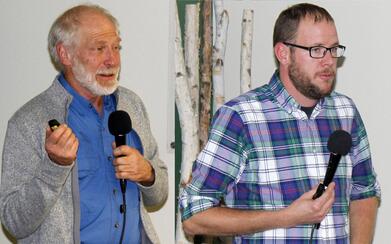 The League of Women Voters Park Rapids Area tackled ground water sustainability concerns in their October 24 meeting. Ground water sustainability is a critical issue to people in the Park Rapids area. The City of Park Rapids has had to deal with excess nitrates in one city well. Many rural residents need to buy bottled water for drinking and cooking because of nitrate concerns. Is this the “tip of the iceberg” or are there ways to manage our groundwater that will allow for industry, agriculture and citizens to share this valuable resource? (photo - Park Rapids Enterprise) Two speakers were on hand for this meeting. The first speaker was Dr. George Kraft, a hydrologist and Professor Emeritus of Water Resources at the University of Wisconsin, Stevens Point. In his thirty years at UW Stevens Point, Dr. Kraft has performed research, advised on policy and doing Extension education on groundwater sustainability issues. His work has concentrated on nitrate pollution of groundwater and drinking water, and how groundwater irrigation pumping has caused a decline in streamflows and lake levels in central Wisconsin. He has published extensively on groundwater concerns, and is sought after as an advisor on scientific and policy workgroups. Dr. Kraft spoke at an LWV UMRR meeting in Stevens Point in April of 2018.
Dr. Kraft’s Park Rapids presentation reflected on his 30 year record of research on how irrigated farming, mainly for potato, other vegetables and field corn have affected groundwater quality and quantity in central Wisconsin. In central Wisconsin, the main issues are extensive nitrate pollution, as over 40 percent of wells in some townships exceed standards, and drying of lakes and streams by unlimited irrigation. This sounds familiar to folks in the Park Rapids area. Dr. Kraft discussed how politics and a strong industry lobby have stymied even discussing the causes and effects of water challenges, let alone suggesting policies on how to manage them. Though Park Rapids area industry, geography, geology and politics may differ from those that exist in central Wisconsin, that region’s experiences may be a help in advancing more proactive discussion and avoiding pitfalls. The second speaker was Minnesota Department of Natural Resources (DNR) Area Hydrologist Darrin Hoverson. Darrin’s responsibilities include surface and groundwater resource management, water resource compliance and regulation as well as providing technical analysis, assistance and information to the public, local and state units of government and other water resource professionals. Having grown up in the Park Rapids area, being an active member of this community and with his 12 years of work at the DNR, Hoverson provides a deep understanding of the area’s natural resources, the community and local issues and concerns. His education includes a Master’s in Water Resources from the University of Wisconsin, Stevens Point, and a Bachelor’s degree in Aquatic Biology from St. Cloud State University. In his candid and thorough presentation, Hoverson provided a brief history and update on DNR groundwater management efforts within the Pineland Sands & Straight River Groundwater Management Areas, ongoing and future monitoring and groundwater studies and private/public partnerships. He focused on DNR’s roles and authority in ensuring the sustainable use of the region’s groundwater and groundwater dependent resources. The session was recorded, and is available on You Tube here. There was lively discussion following the presentations, which is included with the video here. 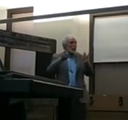 The people of Wisconsin are concerned about what’s happening to their water. This concern was shown Monday night in Stevens Point, where more than 90 people packed the Pinery Room at the Portage County Library to hear Dr. George Kraft talk about the science and policy debate around high capacity wells – read more about this event here. Dr. Kraft’s presentation was captured in an informal video on Facebook live, visit the LWV UMRR Facebook page and look under”Videos”. 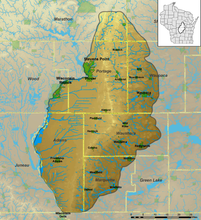 Dr. Kraft is Professor Emeritus from the University of Wisconsin Stevens Point. His work has focused on groundwater resource sustainability, particularly about profitable agriculture and water impacts, and is involved in work to modernize Wisconsin’s groundwater pumping management policy and laws. Wisconsin’s Central Sands region is where Dr. Kraft has spent much of his career, and was the focus of his remarks Monday night. In his talk, Dr. Kraft first talked about groundwater hydrology; explaining the connection between ground- and surface waters. When groundwater levels drop, whether from lack of recharge in dry times or from pumping from wells, surface water resources are also affected. (If the water table drops eight feet, for example, spring-fed streams that intersect the water table will also go down to the same elevation as the water table. The actual amount of drop in surface water levels depends on their normal water level elevation.) Shallower streams like minor tributaries are often dried up, and deeper water bodies will drop in water level. When the amount of cold groundwater entering a stream diminishes, the water warms. Warmer streams longer support trout and other cold-water species, meaning that groundwater depletion leads to ecological change as well. 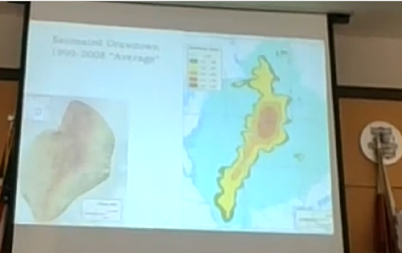 Dr. Kraft's slide showing the drop in groundwater levels in the Central Sands. The red area has the greatest drop - more than 30'. Dr. Kraft's slide showing the drop in groundwater levels in the Central Sands. The red area has the greatest drop - more than 30'. Dr. Kraft talked about the continued expansion of farm irrigation in Wisconsin’s Central Sands. The number of high-capacity irrigation wells in this area has grown significantly, and resultant drops in the water table level have been recorded. What is the effect of this? Dr. Kraft showed pictures of lakes and streams where water levels have dropped, which is especially dramatic in dry years. This isn’t just happening in Wisconsin – Minnesota has similar geologic terrains and similar problems. Dr. Kraft talked about the approach that the Minnesota Department of Natural Resources is taking in the Straight River Groundwater Management Area- read about that here. A second project in Minnesota relating to water use and depletion was reported on in this blog earlier – the Little Rock Creek study. So, will the irrigation wells run out of water, too? Dr. Kraft said that there’s probably plenty of water for irrigation wells for years to come. Central Wisconsin is a water-rich area, receiving more than 30 inches of rain a year. Groundwater is recharged by the rain, and the aquifers here are deep. The groundwater resource will sustain heavy pumping for the foreseeable future, but the impacts on surface water will continue. It is up to the people of Wisconsin to balance theses competing values. 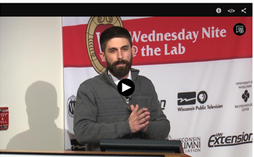 While Dr. Kraft’s talk focused on water quantity, water quality is also an issue in central Wisconsin. Both are addressed by the Center for Watershed Science and Management at the University of Wisconsin Stevens Point. Dr. Paul McGinley is the Director of this Center, Dr. Kraft is an emeritus member and Kevin Masarik, a doctoral student at UW Madison, is also part of the team. Another hydrologist will soon be hired to round out the team. Support for the Center’s staff comes primarily from UW Extension, so outreach to citizens, lake associations and others is a major part of their work. Nitrate contamination is a real problem in Wisconsin, affecting more than 25% of all private wells. Here’s a video presentation where Kevin Masarik explains what nitrate is and explores the effects of nitrate on the environment, drinking water and groundwater. In this video, Masarik discusses data found in Wisconsin’s Well Water Viewer, which can be found at this link. Wisconsin’s groundwater has been the subject of other posts on this blog. See “Protecting Wisconsin Well Owners and Providing Safe Water” at https://www.lwvumrr.org/blog/protecting-wisconsin-well-owners-and-providing-safe-water and “When it Hits the Fan – Groundwater Quality and Public Health” at https://www.lwvumrr.org/blog/when-it-hits-the-fan-groundwater-quality-and-public-health . Did you know that lakes and streams dry up when groundwater levels fall? It's all a system, you know, and each supports the other. The LWV Upper Mississippi River Region April Board and educational meeting will be held in Stevens Point, WI, on April 2. LWV Stevens Point Area has set up Dr. George Kraft to talk about groundwater-surface water interactions, and what that means for both resources when people mess around with the system. This event in Stevens Point will help us understand how this works, and what it means in terms of policy options and decisions. 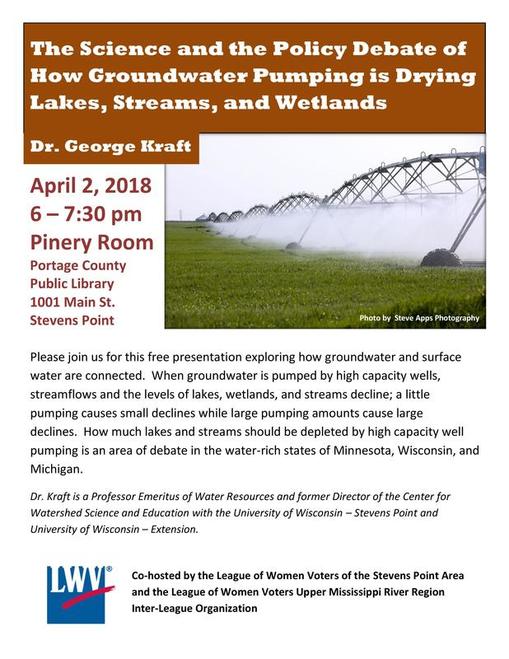 UMRR's Board meets at locations around the watershed on the first Monday of each even-numbered month. We partner with local Leagues to co-host an educational event with each meeting. In October, we met at the Mississippi Headwaters in northern Minnesota, and had a speaker from the Minnesota Department of Health talk about nitrate in drinking water. December's meeting was in Dubuque, and a speaker from the Great River Museum joined us. April 2 the Board will be meeting in Stevens Point, Wisconsin. The Board meeting will be in the afternoon at the Portage County Library. Our agenda will be posted on this website, and all are welcome. But the big show will be in the evening - Dr. George Kraft, UW Professor Emeritus, will talk about the science and policy implications of heavy groundwater use. This meeting is free and open to the public. Join us! Many thanks to LWV Stevens Point for their work in setting this up! |
|||||||||||||||||||||||||||||||||||||||||||||||||
| LWV Upper Mississippi River Region | UMRR blog |
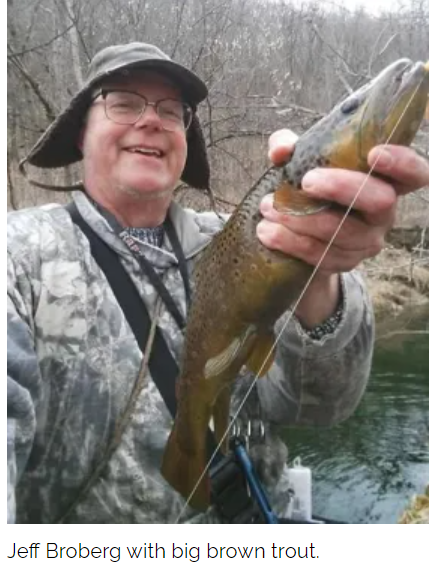


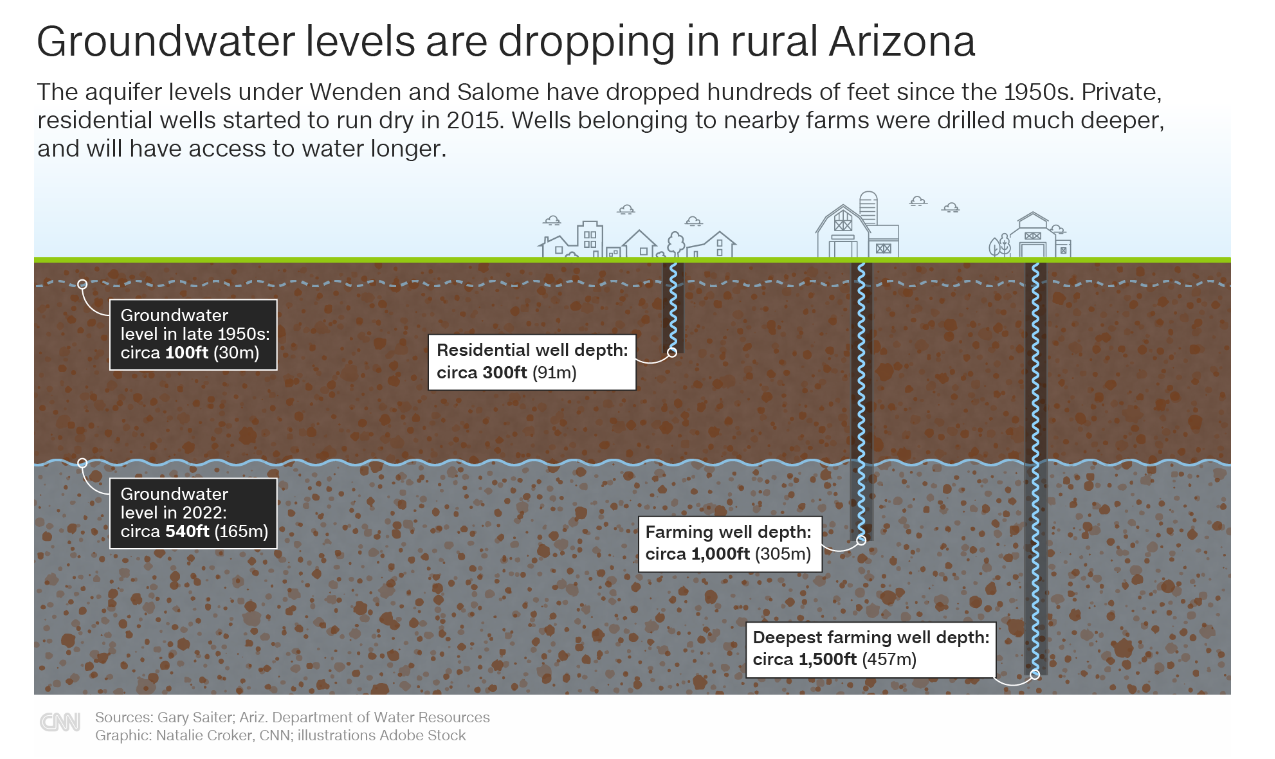
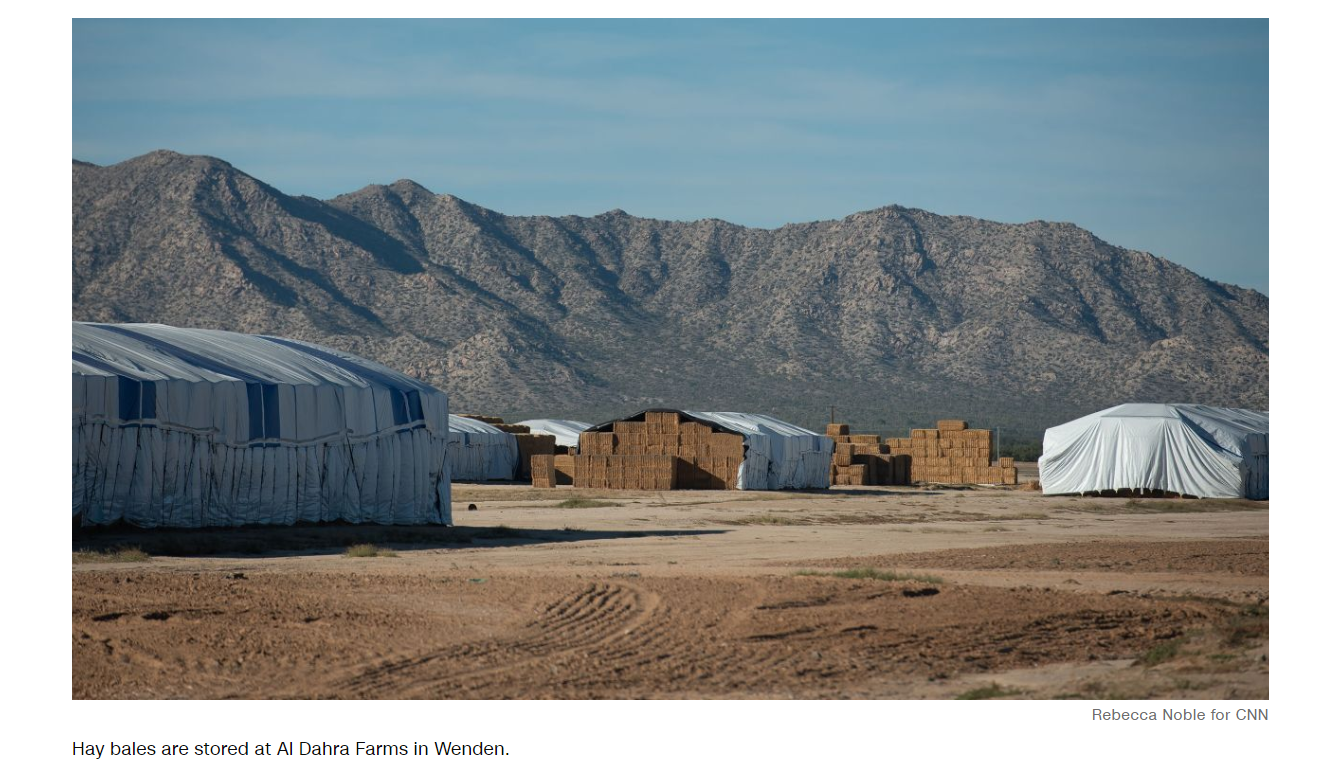
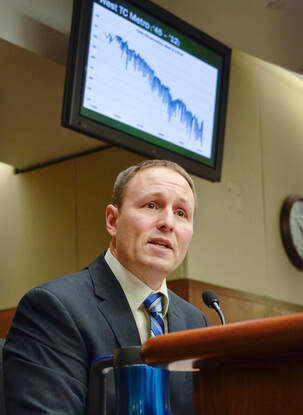
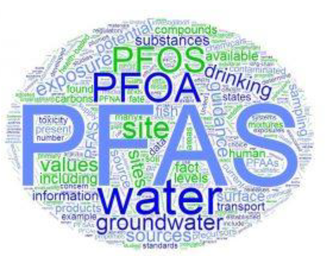

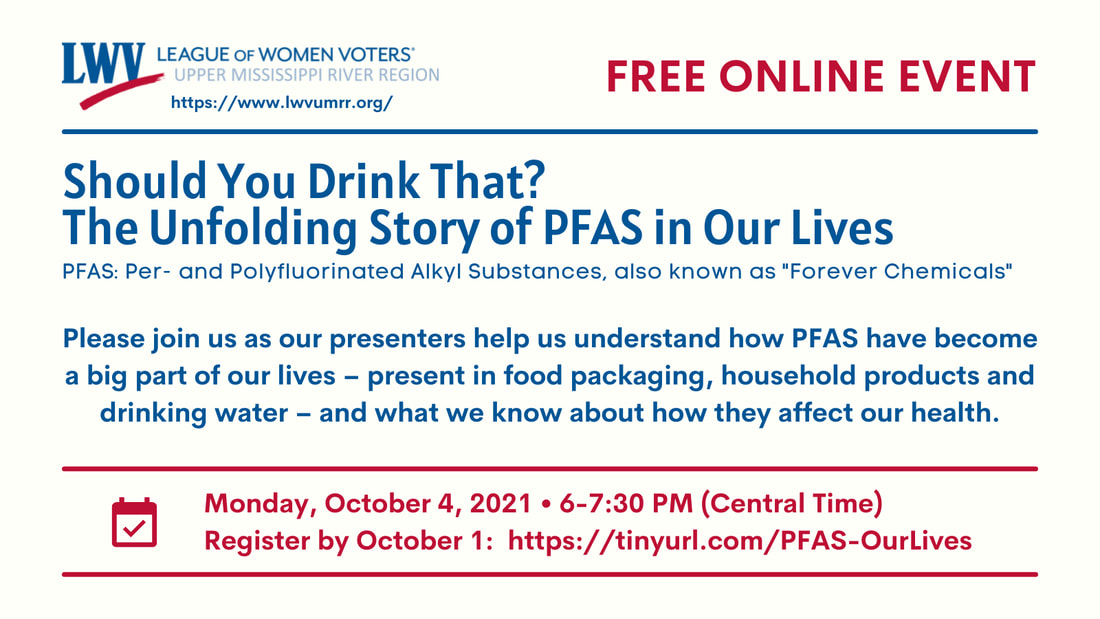
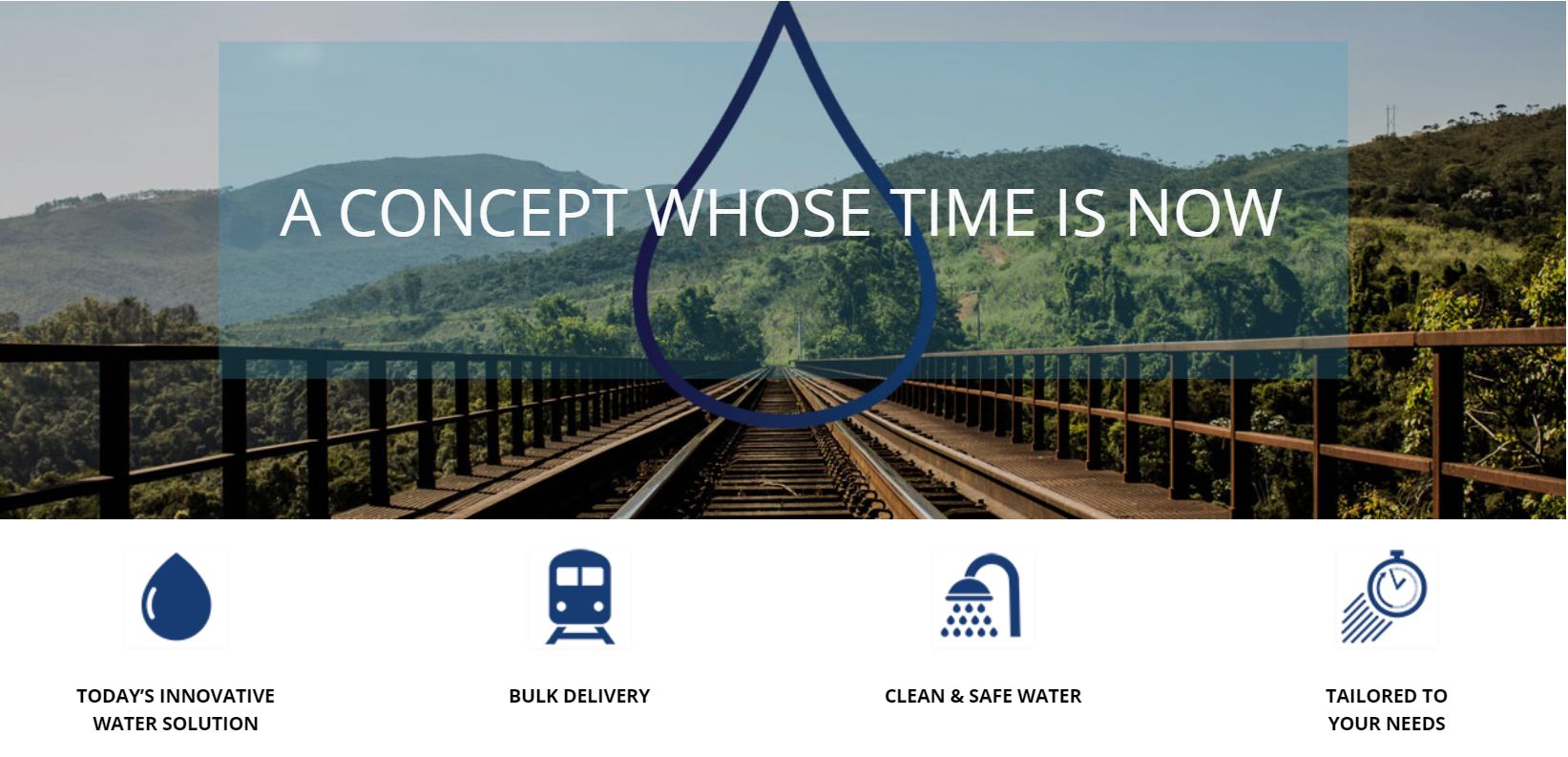
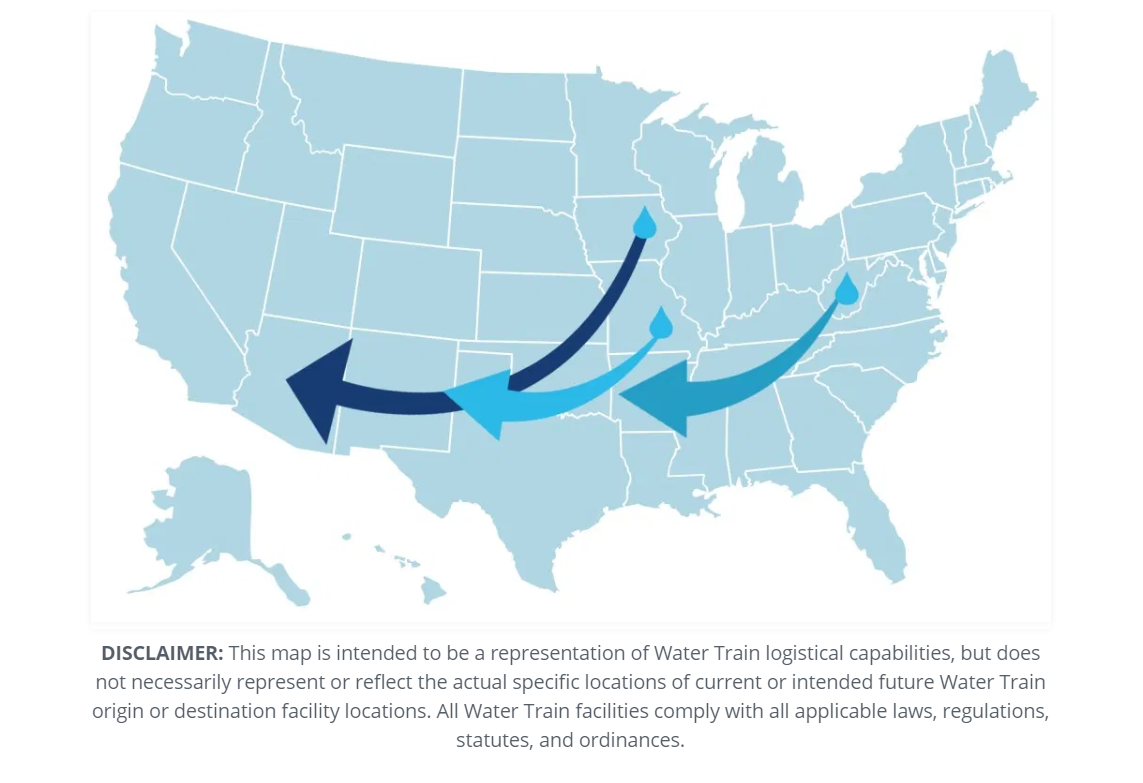
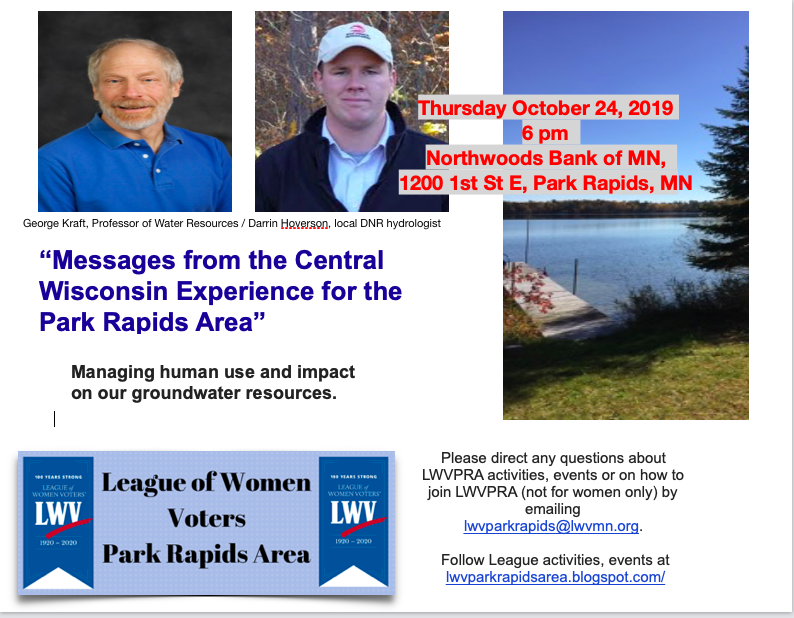
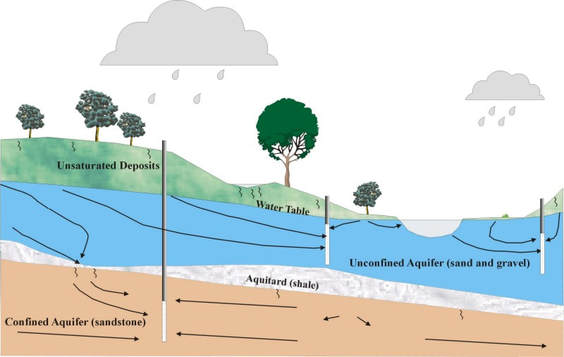
 RSS Feed
RSS Feed